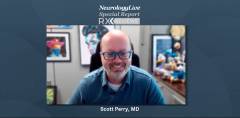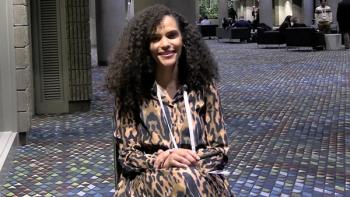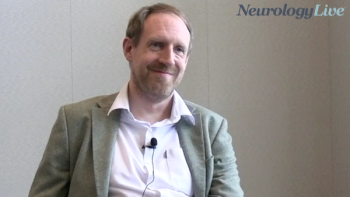
Clinical Insights on the Safety and Tolerability of Zorevunersen
In this episode, Joseph Sullivan, MD, reviews zorevunersen’s long-term safety profile, including cerebrospinal fluid protein changes, procedural effects, and the absence of clinically significant adverse events. [WATCH TIME: 3 minutes]
Episodes in this series

In this two-part NeurologyLive® Special Report, epilepsy experts Scott Perry, MD, and Joseph Sullivan, MD, provide clinical insights into zorevunersen, an investigational antisense oligonucleotide therapy in development for Dravet syndrome. Across both discussions, they explore the rationale behind targeting the SCN1A gene, review emerging efficacy and safety data, and highlight how gene-directed approaches may complement or go beyond current anti-seizure medications.
In this latest installment, Sullivan, director of the Pediatric Epilepsy Center at UCSF, discussed the 36-month data presented at IEC 2025, including long-term seizure reduction, Vineland-3 outcomes, and safety observations from the open-label extension. He also breaks down the design of the ongoing phase 3 EMPEROR trial and reflects on how zorevunersen continues to demonstrate additive benefit, even in patients already receiving highly effective therapies.
In episode 7, Sullivan discussed the favorable safety outcomes observed with zorevunersen over 36 months of follow-up. He describes how gradual CSF protein elevations were common but asymptomatic and often stabilized or declined over time. The findings support the therapy’s tolerability, with most side effects related to the intrathecal procedure rather than the medication itself.
Transcript edited for clarity.
Joseph Sullivan, MD: Overall, the drug was very well tolerated throughout the 36-month period. The most consistent side effect, particularly during the open-label extension, was an elevation in cerebrospinal fluid (CSF) protein, which occurred in more than 75% of patients when defined as a value above 50 mg/dL. Early on, we weren’t sure what the long-term trajectory of those protein levels would be. Some patients’ levels continued to rise initially, while others plateaued or stabilized.
Importantly, no patients ever experienced clinical symptoms related to these CSF protein elevations. The symptoms we would typically worry about—such as headaches, vomiting, or lethargy associated with increased intracranial pressure—never occurred. I think part of the reason for that is the gradual nature of these changes. Because the increases happened slowly over time, the central nervous system likely had time to adapt, maintaining compliance and avoiding any acute effects.
What we’ve observed is that each patient seems to have their own trajectory: levels rise to a certain point, plateau, and then slowly decrease, even without altering or skipping doses. It’s something we’re continuing to monitor closely, but to date, we haven’t seen any signal that would raise concern about clinical safety or long-term tolerability.
The other notable side effects were procedural rather than pharmacologic. Since zorevunersen is an intrathecally administered antisense oligonucleotide, it’s delivered via lumbar puncture. Some patients did experience post–lumbar puncture headaches and vomiting, which are expected with this procedure, but those cases were in the minority. Most were managed conservatively with supportive care, and none required a blood patch or hospitalization.
Overall, we’re very reassured by these results. The therapy continues to show an excellent safety profile, especially given that these patients received repeated dosing over several years. There have been no new or unexpected adverse events, and no cases of clinical symptoms tied to CSF protein changes. Taken together, the long-term data suggest that zorevunersen is both safe and well tolerated over time, which is encouraging as we move into larger, controlled studies.
Newsletter
Keep your finger on the pulse of neurology—subscribe to NeurologyLive for expert interviews, new data, and breakthrough treatment updates.

































